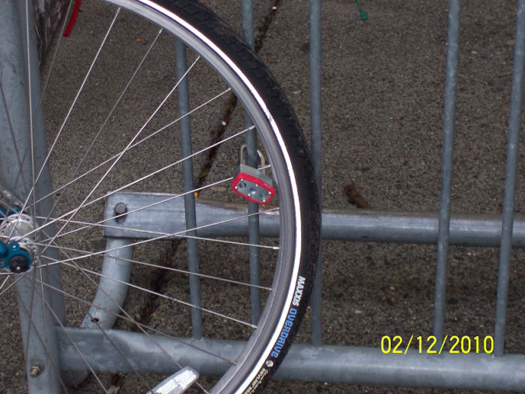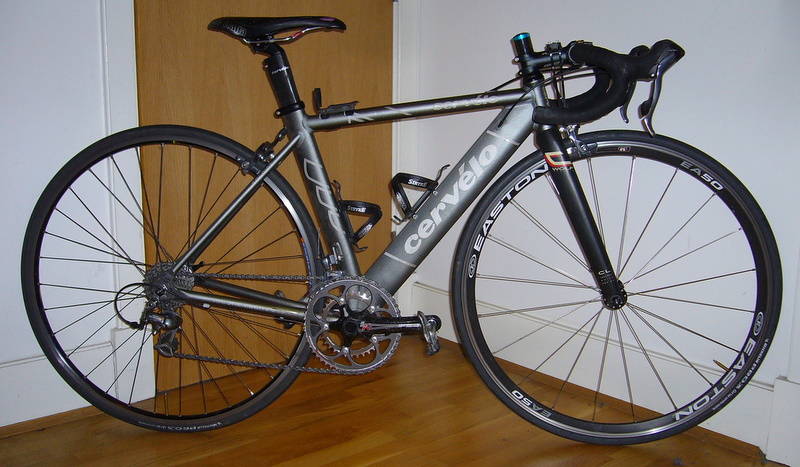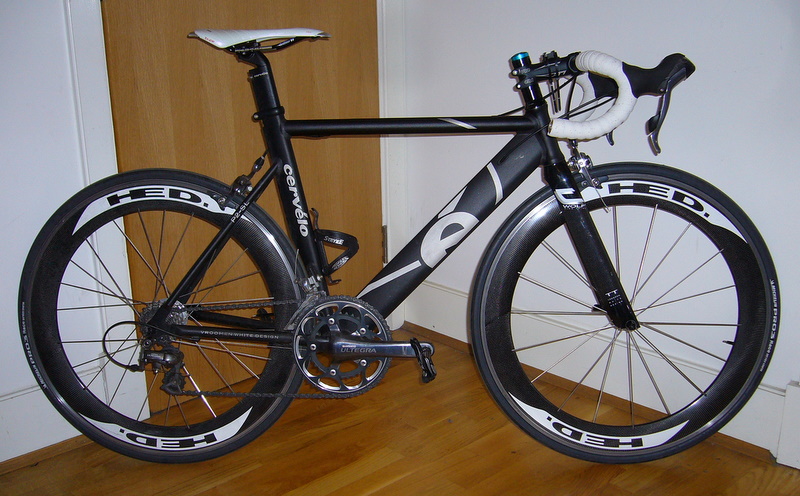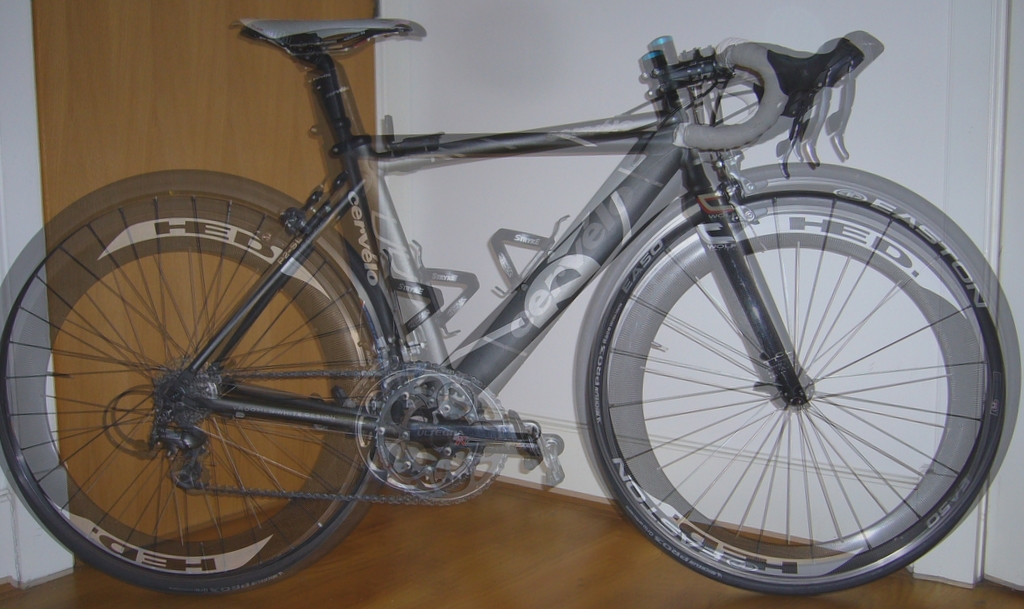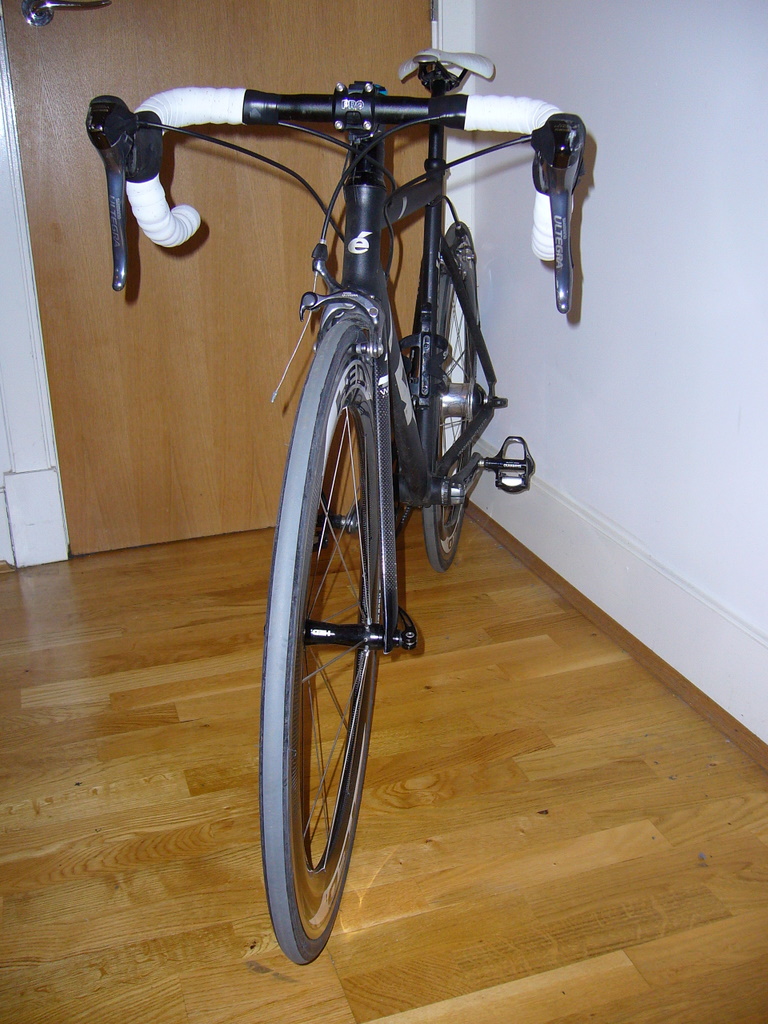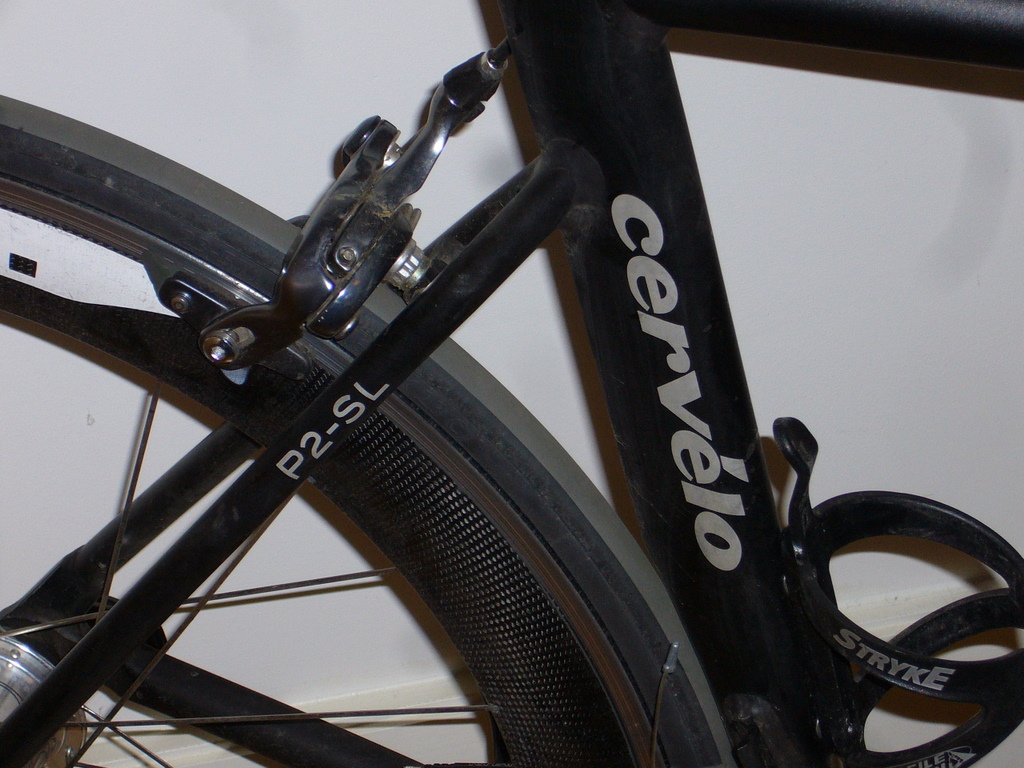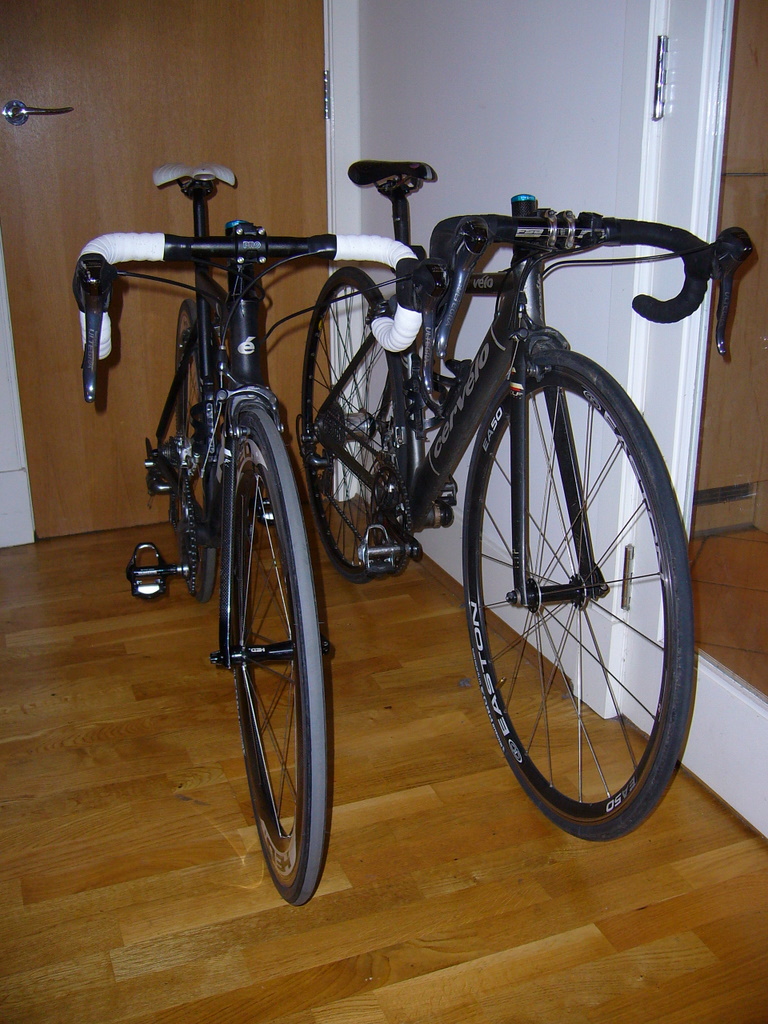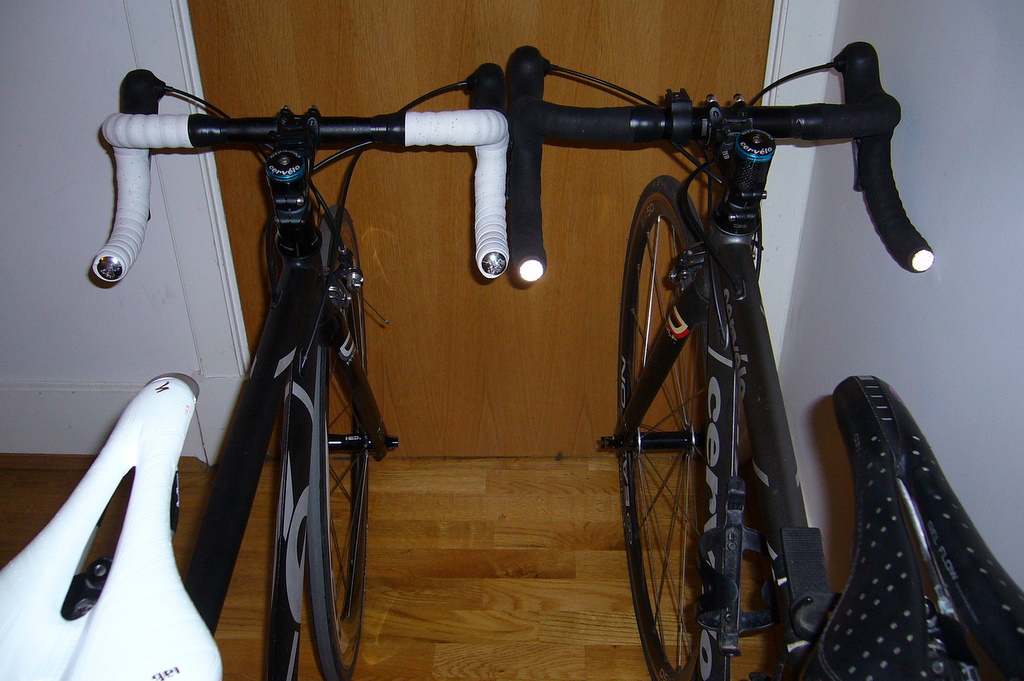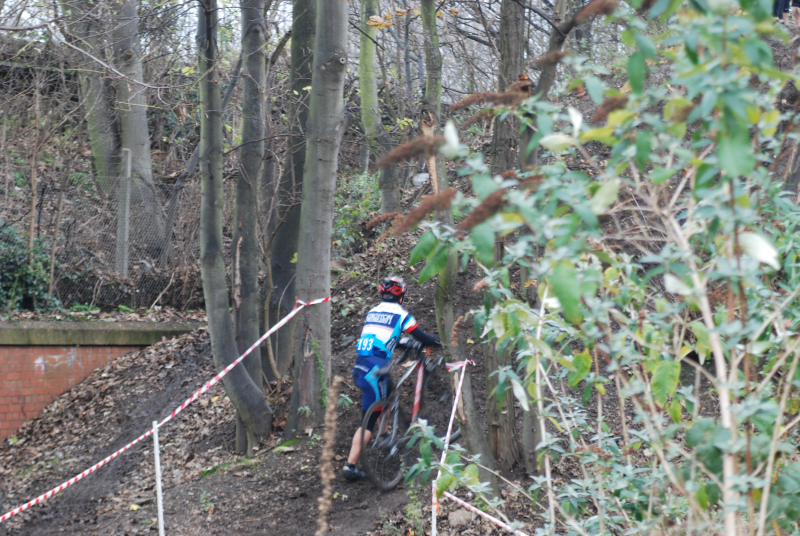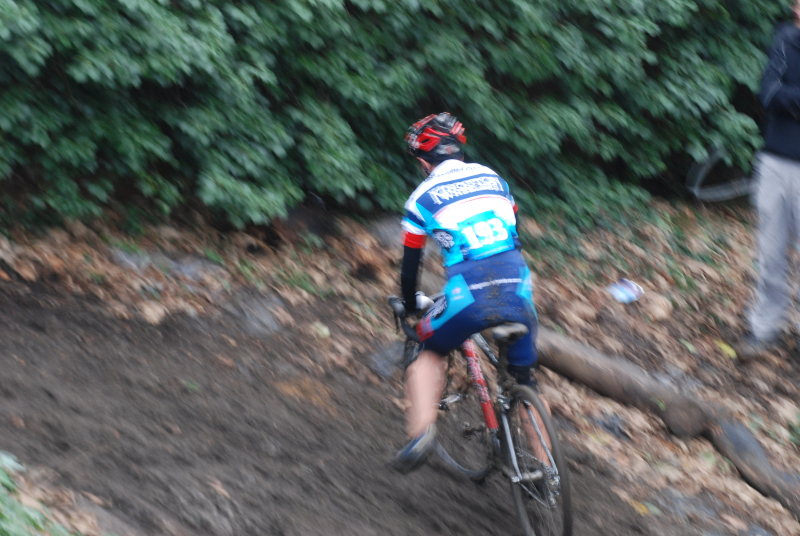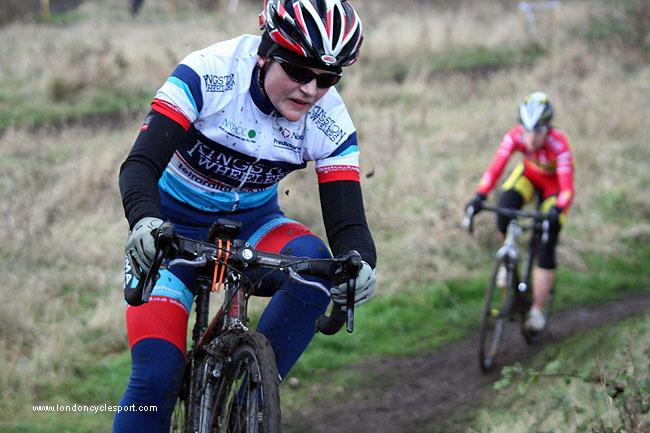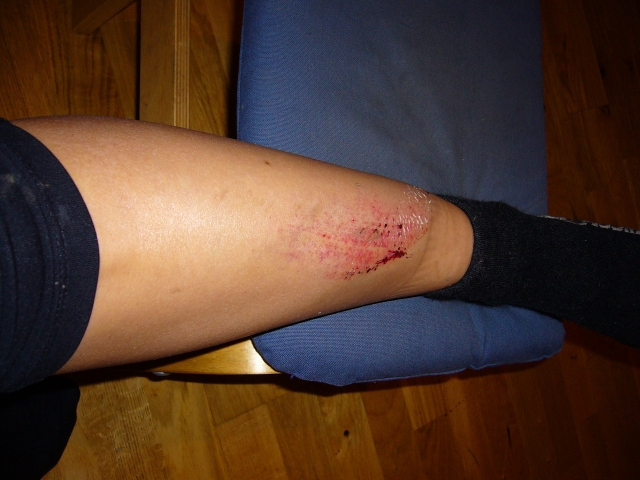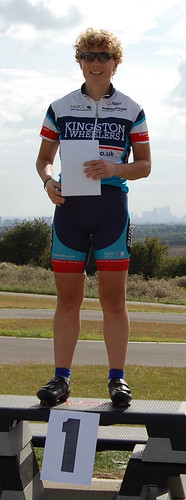The weather's gone from beautiful and sunny and
almost but not quite too hot the past couple of weeks to cool and rainy today, more typical English summer weather I suppose? Given a hard couple of training weeks including a 165km ride on Saturday, I've felt a bit blah the past couple of days. So I figured I'd blog about my new (used) TT bike to help pick up my spirits. It's a 2006 Cervélo P3C with a Powertap Pro+ in Hed Jet C2 60mm rims. In short, more carbon fibre than I've ever seen in my life, and easily the most bling bike I've ever owned.
It's funny to reflect on how my bikes have evolved since I did my first Try-a-Tri on my old mountain bike back on Labour Day weekend, 2003. After that race, I was well and truly bitten by the tri bug, so I set about finding a "real" road bike and ended up with a circa 1988 12-speed Italian roadbike knock-off that I picked up for $100 at a secondhand sports store. I replaced the drops with tribars and managed to rig up the downtube shifters to the aerobars, though I couldn't get up any hill over 5% without standing due to its 53/39
Biopace rings and 11-24 cogset. Still, it did the trick for the next two summers and even saw me through my first half-Ironman. Alas, it's been sitting in my parents' shed ever since I left Canada and though I've been resisting for a while, I've finally given in to their wishes to
just get rid of it. My sister will probably sell it at a garage sale for $50...
 The trusty old 1980s "Finelli"
The trusty old 1980s "Finelli"When I moved to Holland in 2005, I bought another old steel roadbike, this time a
Batavus, as my daily getabout, stuck some flat bars on it and used that for the first few months of bike training until I found a secondhand 2002 Giant OCR for €400. With clip-on aerobars and a nice female-friendly saddle, I rode that Giant into the ground for the next 10,000+km, including a trip to Lanzarote where it got lost on the way for three days, all kinds of races from sprints to 3/4-Ironmans, and even a city criterium on the cobbled streets of Utrecht. It was finally replaced by my
Cervélo Soloist Team a year ago, and after riding that for a few months I realised that the OCR is actually just a bit on the big side for me. So with the addition of the
Fuji track bike cum fixie last Christmas into the overcrowded bike room, I knew it was time for the OCR to go. With sadness I sold it for £180, trashed Rolf wheels and all, where it was parted out by an enthusiastic Bike Radar bike flipper -- hopefully the frame has gone to a good home!
 2002 Giant OCR
2002 Giant OCROnce I knew I'd want to tackle an Ironman -- and coincidentally decided that I was finally a "good enough" cyclist to get a nice new bike -- I figured I'd better get a proper TT bike. The mid-priced and solidly engineered Cervélo P2SL fit me like a glove, so I picked up a new old stock in beautiful anodised black when home on vacation in the late summer of 2007. The difference in speed was immediately noticeable, as it had 650c wheels which allowed me to get quite a bit lower and more aerodynamic. It got me through a number of races including Ironman Germany and with some secondhand Hed Deep wheels it was going to be my IM Lake Placid bike this year.
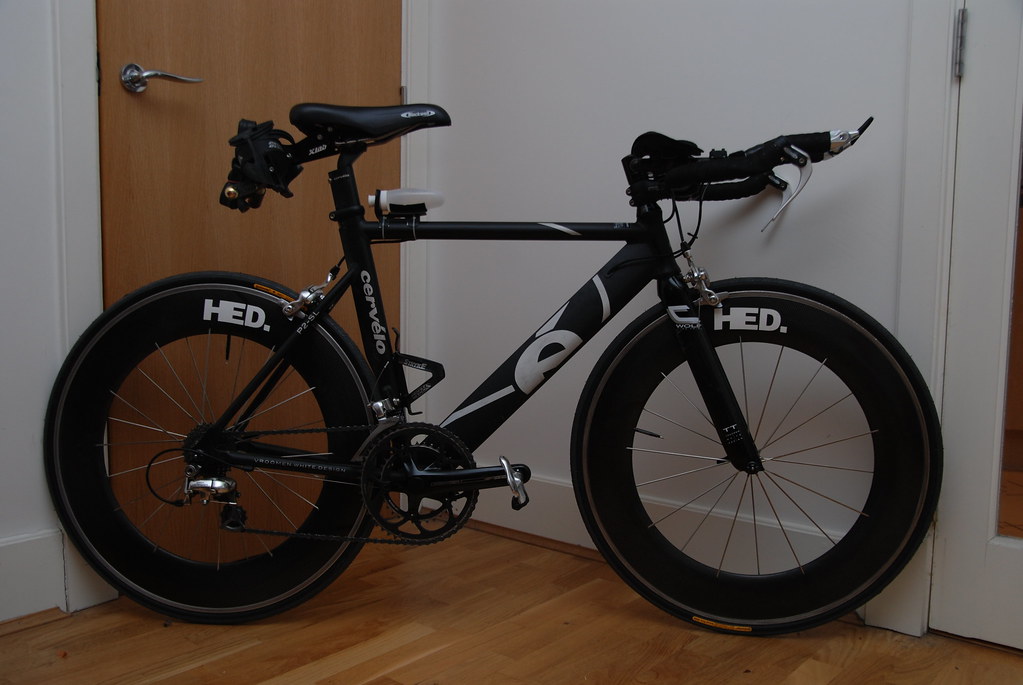 2006 Cervélo P2SL with Hed Deep wheels
2006 Cervélo P2SL with Hed Deep wheelsWhich brings us to the P3C. Jim found the right-sized frame for a great price on ebay, and once we won the auction and picked up the bike, I set about transferring over all my bits from the P2SL. After that, it was just a matter of waiting for my Hed wheels to be built with the Powertap Pro+ for the bike to be race ready. And frustrating as that wait was, it was well worth it as this is by far the fastest bike I've ever ridden! After three weeks of tweaking the bars and stem and saddle, all the while hoping my legs would remember what it was like to ride in that low TT position enough to regain their power, last weekend it all finally came together.
 2006 Cervélo P3C
2006 Cervélo P3C Hed Jet C2 60 rim with Powertap Pro+ hub
Hed Jet C2 60 rim with Powertap Pro+ hubWith a 30km run in my legs from the day before, I set off on what I thought would be a ~150km/5-hour ride on a more or less flat course, the goal being to cycle at Ironman watts with a few harder intervals thrown in. The wind was pretty strong but to my surprise it never felt like a headwind unless I was literally riding straight into it; at every other angle, I felt like the wheels were being pushed along like a sail. I kept looking down and seeing speeds between 34-38km/h while barely hitting 150 watts, something that would be unheard of on my regular road bike. When I caned it along at 200 watts for 30 minutes into that direct headwind, I managed to hold 36km/h! Later with the tailwind it was an effortless 45km/h as I overtook cars in the towns I passed through. Finally home 5 hours and 23 minutes later, to my amazement I had ridden 165km in 5 hours flat of riding time.
 All that shiny gridded carbon
All that shiny gridded carbonNo doubt that Ironman Lake Placid is hilly but that one long ride has done more to boost my confidence for the race than any ride has in months. I've started to taper this week, easing back on the high volume though keeping up the intensity, and my last big race rehearsal ride this weekend on reasonably fresh legs should yield similar if not better results. I've got half a mind to find a last minute 100 mile time trial if only they'd let me have a late entry...
A few more shots of the P3C and my setup:
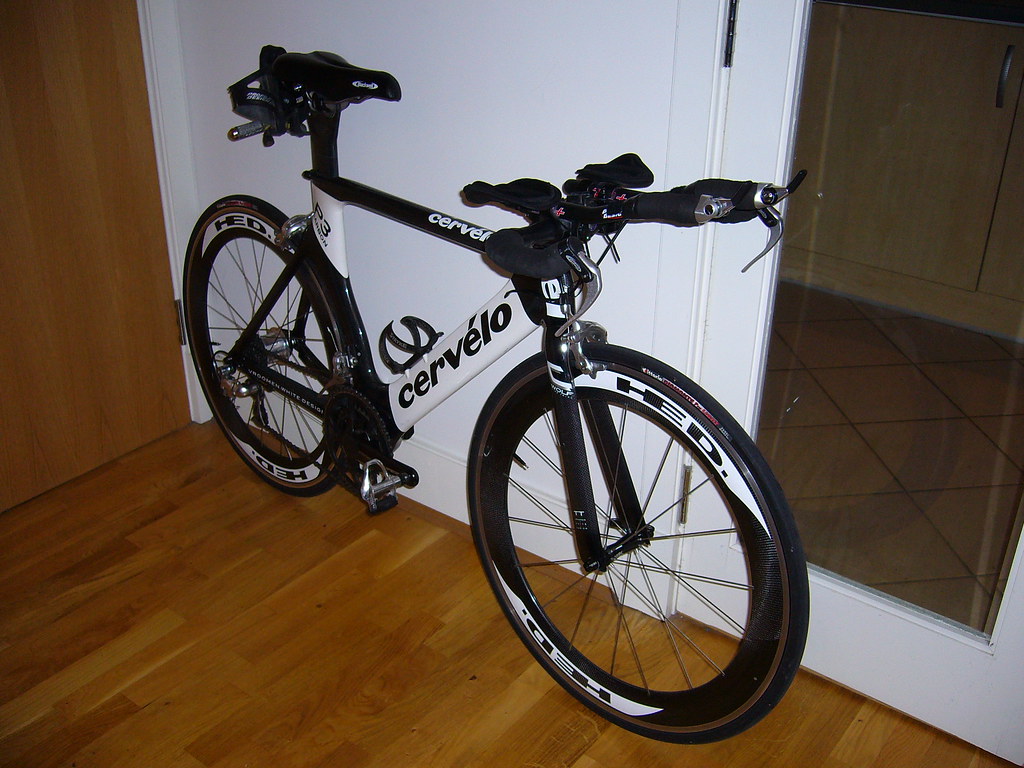 Profile Design bars, nearly infinitely adjustable
Profile Design bars, nearly infinitely adjustable Nice narrow profile for the wind
Nice narrow profile for the wind
